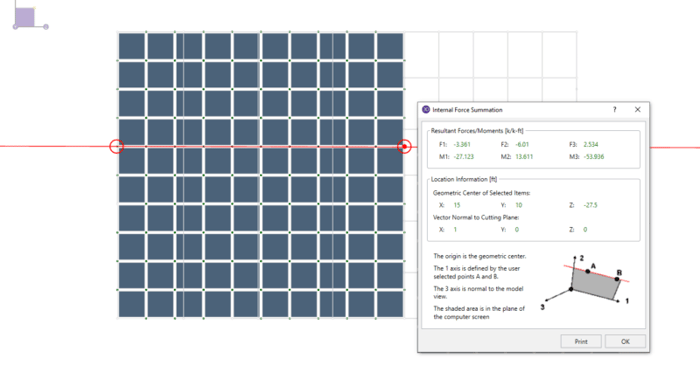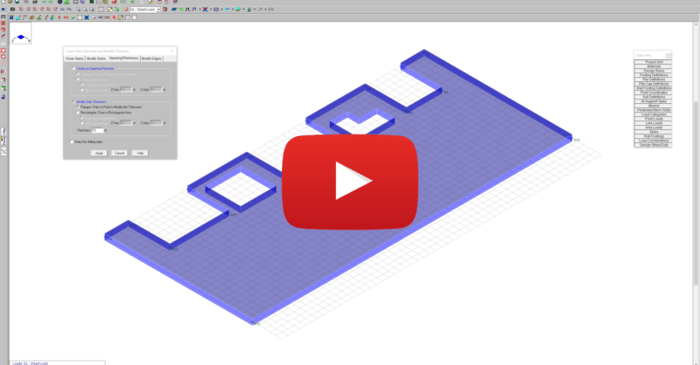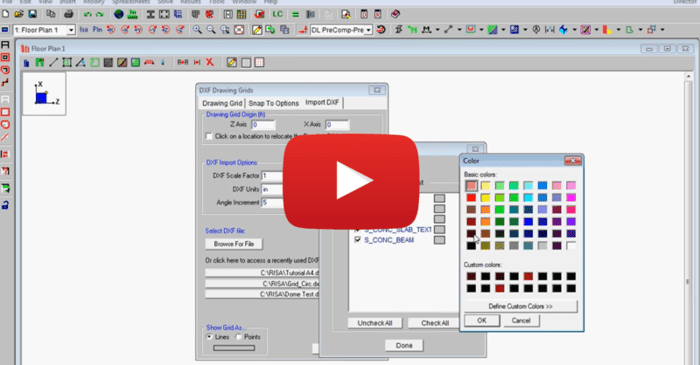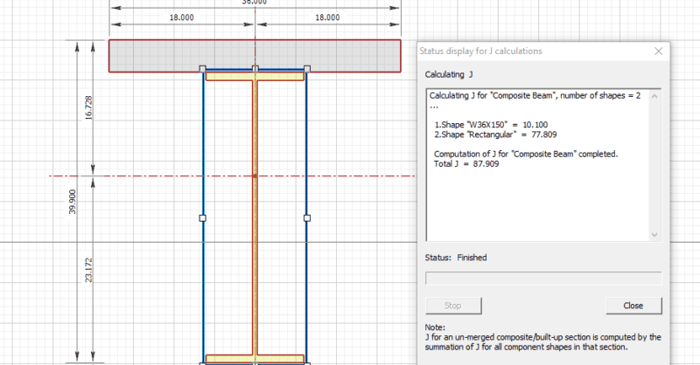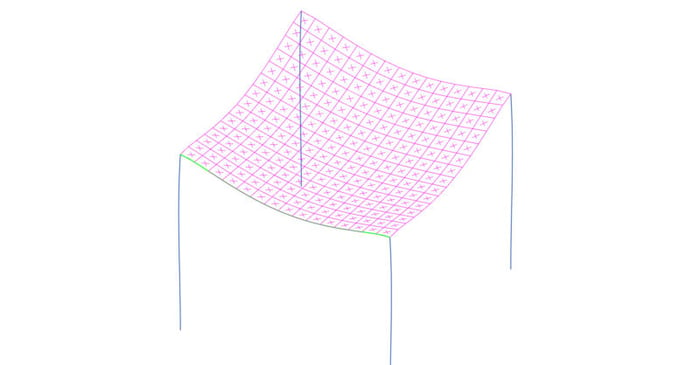
May 15, 2013
How can I find the deflection of plates?
Below is a model of a flat concrete slab made of plates. In order to ensure adequate serviceability of the slab, you may need to check the deflection of the slab between columns. However, RISA-3D only reports Member and Joint Deflections. There is no such thing as a “Plate Deflection”.





